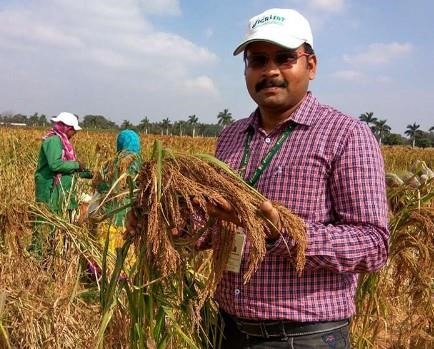By Eric Hamilton
Since humans began cultivating the land, we've prioritized one type of crop above all others: grain. With high amounts of minerals, protein, and vitamins, cereal grains form the foundation of diets worldwide.
But while our ancestors grew many different kinds of grains, today only a few reign supreme. Corn, wheat and rice dominate modern agriculture. And they provide about 60% of the calories humans eat worldwide.
Yet many other grains are available. They can serve important roles, such as hedging against climate change and providing farmers with diverse sources of income. One such grain, known mainly in India, is called little millet.
"Little millet grains are versatile and taste similar to rice, and can easily be incorporated into existing rice or maize-based recipes," says Mani Vetriventhan, a scientist at the International Crops Research Institute for the Semi-Arid Tropics in India. "It is a good alternative staple in cereal-based diets, particularly in a changing climate."
Little millet production fell from the 1950s to the early 21st century. "The decline in consumption is mainly due to a major shift in diet preferences from traditional millets to rice, wheat, maize and other commercial crops," explains Vetriventhan.

Plant scientist Mani Vetriventhan in an experimental field used to study different varieties of little millet.
Not surprisingly, the 200 types of little millet varied a lot. Yet for each important trait, like yield, some stood out. Fifteen varieties had significantly higher yield, some double the average. Other varieties produced a lot of straw, which could be useful as a biofuel.
But that's changing. "Currently, the demand for little millet and other small millets has increased, underlining the need for more research and policy support," Vetriventhan adds.
To help farmers decide which varieties of little millet to grow, Vetriventhan and his colleagues grew and studied 200 different types of the grain for yield and nutrient potential.
This work can help researchers choose little millet varieties to release and varieties to improve through breeding. The research was recently published in Crop Science, a publication of the Crop Science Society of America.
The scientists focused on important crop traits like grain yield and plant height. But they also looked at nutrition. Staple grains have to supply a lot of important nutrients to keep people healthy. So Vetriventhan's team measured grain protein content. They also analyzed the essential minerals calcium, iron and zinc. To get an average set of measurements, the scientists grew the crops over two different years.
Click here to see more...